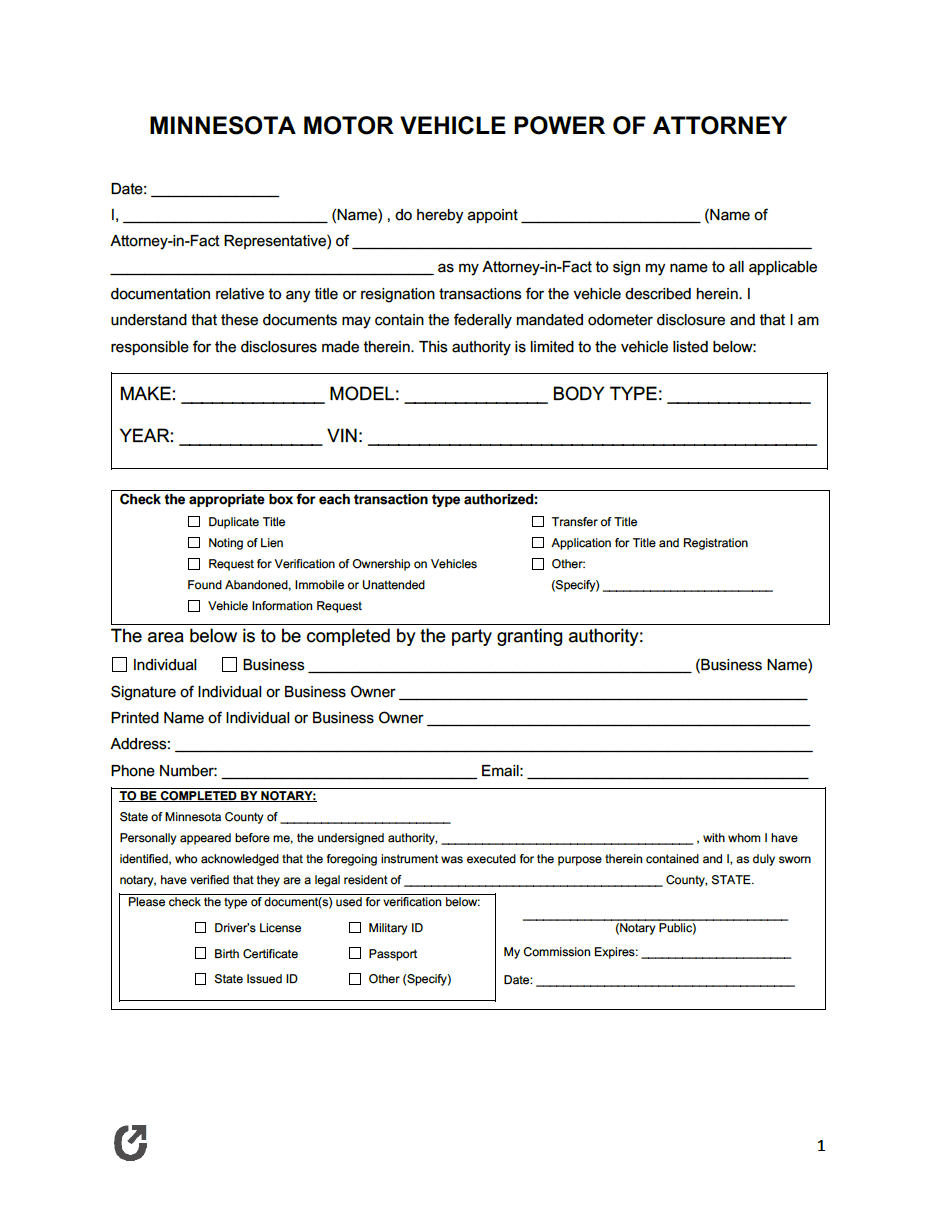Minnesota Vehicle (DMV) Power of Attorney Form
A Minnesota motor vehicle power of attorney empowers an attorney-in-fact to represent a vehicle owner, lessee, or business when completing tasks regarding a car, truck, or van. The principal decides the level of power they want to give the attorney-in-fact by allowing or restricting responsibilities. They must provide instructions that both parties clearly understand. Wrongful decisions, whether intentional or not, can lead to legal action. Thus, the attorney-in-fact must clarify their role before acting on the principal’s behalf.
The attorney-in-fact must have a signed form to act in place of the vehicle owner. The Department of Motor Vehicles (DMV) only allows the empowered individual to make decisions for the owner if they have a copy of the form. Possession of the document enables them to sign papers for the principal, apply for registration and title, or request a duplicate title. They also have the power to buy or sell a vehicle through a dealership or private party.
| Signing requirements: Notarization required. |
What is the Purpose of a Vehicle POA?
A vehicle power of attorney allows the appointed individual to act on behalf of the principal, making decisions and performing tasks such as signing papers, applying for registration and title, or buying and selling a vehicle. This legal form helps to guarantee that a trusted individual makes the right decisions per the vehicle owner or lessee’s request.
The form only authorizes an attorney-in-fact to complete tasks related to a vehicle. For duties unrelated to a car, the principal must complete another type of power of attorney form. A general power of attorney covers financial-related decisions, while a tax power of attorney allows the appointed person to make tax-related decisions for the principal.
When appointing an attorney-in-fact for a motor vehicle power of attorney, it is vital to consider their reliability. They should have the experience necessary to carry out their responsibilities effectively. Periodically reviewing and updating a power of attorney is advisable to ensure that it aligns with the principal’s current needs and circumstances. In conclusion, creating a motor vehicle power of attorney is essential to effective financial and legal planning for vehicle owners, lessees, and businesses.
How to Write
Step 1 – Information of Both Parties Involved
For this first section, write today’s date, the car owner’s full name, and the attorney-in-fact’s full name and address.

Step 2 – Car Identifiers
To ensure the agent’s authority is limited to a specific vehicle, fill in the following details:
- Make
- Model
- Body type
- Year
- VIN (Vehicle Identification Number)

Step 3 – Acts Authorized
The owner must indicate on this form which act(s) he/she authorizes the attorney-in-fact to perform. Select the box associated with each task the attorney-in-fact is allowed to do. If there is a transaction that is not included on this list, enter a checkmark by ‘Other’ and specify it on the line provided.

Step 4 – Owner or Business Personal Details
The grantor (owner) executes the form by selecting either Individual or Business and providing his/her name, signature, address, phone number, and email address. A Notary Public must oversee the owner’s signature and complete the following section of the form to confirm they served as a witness.

Step 5 – Notarization
A Notary Public must enter their personal information and sign to verify the authenticity of the grantor’s signature.

